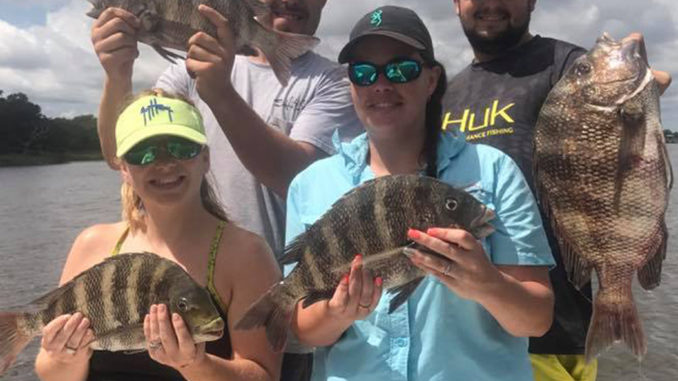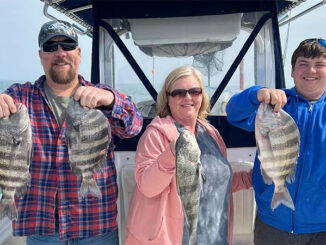
Charleston jetties, bridge pilings come alive
Anglers looking for something a little different will find it along the Charleston Harbor jetties and bridge pilings this month. It’s a great time for sheepshead fishing.
“You can catch these fish throughout the summer with no problem. But this month is definitely when you start to see it get even better,” said Marc Deschenes of VIP Adventures in Summerville, S.C. “It’s also easier on the angler, because it stays cool later into the mornings and begins cooling off a little earlier in the evenings.”
Deschenes likes to get on the water just before the tide starts in, and he will stay on the sheepshead until about two hours after the tide reaches its highest point. He anchors down or ties up to a piece of structure that allows him to fish vertically next to barnacle-encrusted structure.
“At low tide, you can see all the exposed barnacles. That’s what the sheepshead are after. The fish will come in at low tide and sit, waiting for the tide to come up and make those barnacles available to them. So you can catch some with fiddler crabs at low tide, but they are really in a feeding mood when they can reach those barnacles,” said Deschenes (843-708-5473).
Just as the tide begins to come in, Deschenes likes to chum the water with a homemade mixture of crushed barnacles, and he uses a Carolina rig with a 1/2-ounce sinker, a 12-inch leader of 20 to 30-pound monofilament, and a 2/0 hook with a live fiddler crab.
“You want a quality, stout hook that stays sharp. I don’t use any kind of fancy or expensive line, but I don’t skimp on hooks,” he said. “Setting the hook on a sheepshead is like setting the hook on a rock. It will wear out a cheap hook real quick.”
When not using a Carolina rig, Deschenes will use a 3/8-ounce Ralph Phillips jighead with a fiddler crab.
“It’s got a good, sharp hook and a big eye on the jighead,” he said. “That’s working really well too, and you usually don’t get hung up as much with this as you sometimes do with a Carolina rig.”
Deschenes suggests anglers slowly drop their baits straight down, let them touch the bottom, then reel up three cranks of the handle and get ready to set the hook.
“As the tide gets higher, you’ll want to adjust how far you reel up. You want to reel to where the fish are most likely to be, which is the most congregated area of barnacles they can reach depending on the tide. You might also have to bump up the weight to a 1-ounce or even 11/2-ounce sinker as the tide starts moving quicker to keep your bait straight down,” he said.




